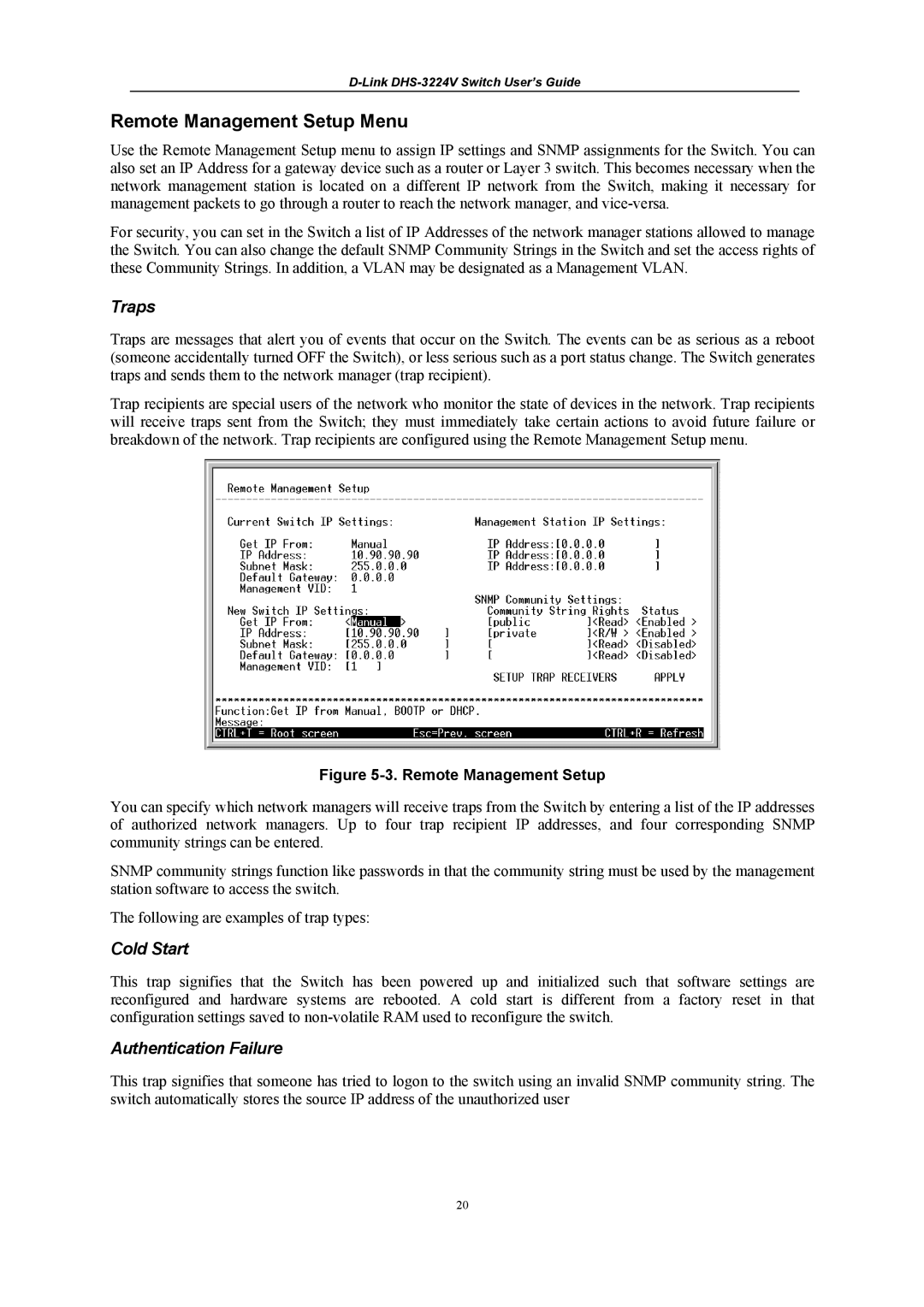
Remote Management Setup Menu
Use the Remote Management Setup menu to assign IP settings and SNMP assignments for the Switch. You can also set an IP Address for a gateway device such as a router or Layer 3 switch. This becomes necessary when the network management station is located on a different IP network from the Switch, making it necessary for management packets to go through a router to reach the network manager, and
For security, you can set in the Switch a list of IP Addresses of the network manager stations allowed to manage the Switch. You can also change the default SNMP Community Strings in the Switch and set the access rights of these Community Strings. In addition, a VLAN may be designated as a Management VLAN.
Traps
Traps are messages that alert you of events that occur on the Switch. The events can be as serious as a reboot (someone accidentally turned OFF the Switch), or less serious such as a port status change. The Switch generates traps and sends them to the network manager (trap recipient).
Trap recipients are special users of the network who monitor the state of devices in the network. Trap recipients will receive traps sent from the Switch; they must immediately take certain actions to avoid future failure or breakdown of the network. Trap recipients are configured using the Remote Management Setup menu.
Figure 5-3. Remote Management Setup
You can specify which network managers will receive traps from the Switch by entering a list of the IP addresses of authorized network managers. Up to four trap recipient IP addresses, and four corresponding SNMP community strings can be entered.
SNMP community strings function like passwords in that the community string must be used by the management station software to access the switch.
The following are examples of trap types:
Cold Start
This trap signifies that the Switch has been powered up and initialized such that software settings are reconfigured and hardware systems are rebooted. A cold start is different from a factory reset in that configuration settings saved to
Authentication Failure
This trap signifies that someone has tried to logon to the switch using an invalid SNMP community string. The switch automatically stores the source IP address of the unauthorized user
20
